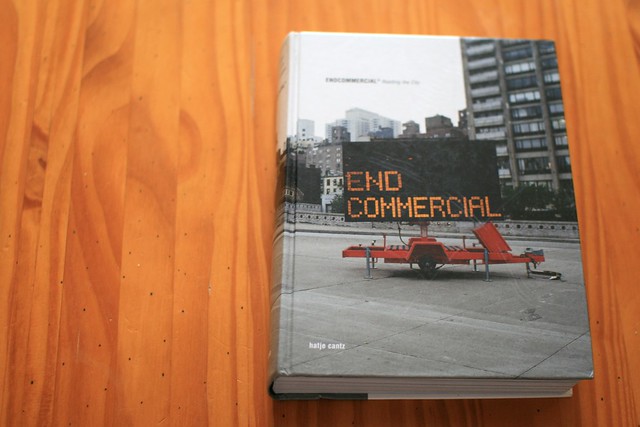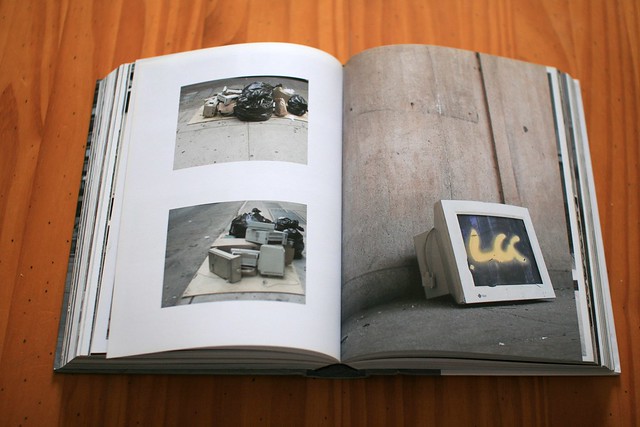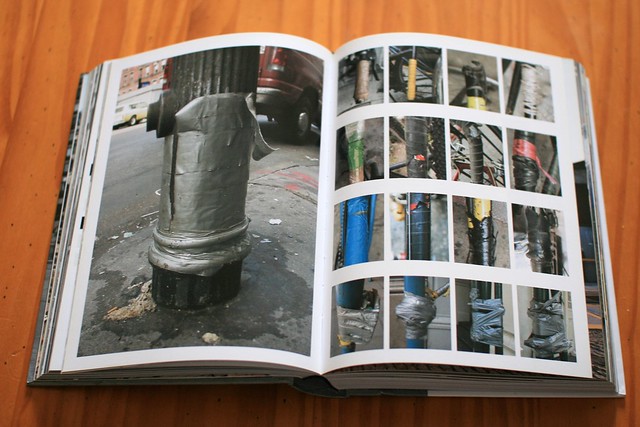ENDCOMMERCIAL® / Reading the City is a book that Chris Woebken recommended few weeks ago via a quick exchange of 140-character messages. It's a fascinating object that is perhaps 102% in line with my interests (urban artifacts, classification, aesthetics).

This book is basically a compilation of pictures photographed by Florian Böhm, Luca Pizzaroni, Wolfgang Scheppe and published by Hatje Cantz Publishers. It is based on a exhibit located in Berlin back in 2002 and features an extensive exploration of New York City. The authors took this environment as a sort of generic city from which they could highlight certain aspects. Which was definitely the purpose of the authors, as they say, "it is about the represented not the representation" and their inspiration lies both in "scientific and ethnological photography and Claude Levi-Strauss" and "the device itself: the product line of electronic consumer goods. Digital cameras by japanese makers. Nikon, Canon, Sony".


Why do I blog this? What I found interesting in this work is that it's definitely more than a simple visual encyclopedia:
" I hope it can change your sensibility for your surrounding, a change in perception of the ordinary, a shifted view on something that has become invisible by its omnipresence. The images are arranges in a way that they have an effect on you, wake you up, make you see things for example reveal social and economic patterns that shape the modern urban enviroment, understand things in their context."
The way they sorted the picture is also interesting. Based on an inductive approach, they sorted the different themes and they created various "periodic tables" to define similarities and categories:
"WS: The quality of the diagrams is that of a taxonomy. A taxonomical order systemizes phenomenons due to analogies and similarities judging elements of their appearance. while analyzing and researching our archive we found similarities, types of figures, strange coincidences. after identifying these they were transformed in themes and subjects for new shootings and field researches. new material was collected to verify or falsify categories of the taxonomy.
FB: The Diagram was extracted from the material after screening and structuring the image archives into themes, not the other way around. In this way it is rather an empiric investigation with a result that could have not been anticipated fully in the beginning. The material reveals many aspects, sociological, political, economic, urbanistic etc... But we didn't plan for it to be anything."


As a final word, one of the best quote from the author about this work is certainly: "it is impossible to walk down the street without seeing social qualities in objects". This is clearly what this book depicts.